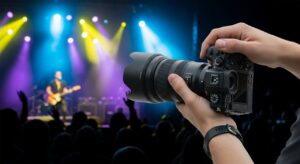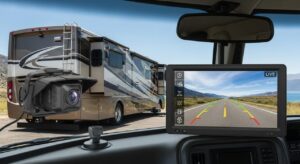How to set up home weather station ? Quick Guide

Introduction
Having your own home weather station can be a great way to get more accurate and detailed information about the weather in your area. Whether you’re a weather enthusiast, keen gardener, or simply want to keep an eye on the weather conditions in your area, setting up a home weather station can be a fantastic way to do so.
In this article, we will guide you through the process how to set up home weather station, including choosing the right equipment for your needs, installing it correctly, and maintaining it to ensure accuracy.
Choose the right equipment
The first step in setting up a home weather station is choosing the right equipment for your needs. There are a variety of different weather instruments available, including thermometers, barometers, hygrometers, anemometers, rain gauges, and weather radios.

Before purchasing any equipment, it’s important to consider your specific needs and what kind of weather data you want to track. If you’re just looking for basic temperature and humidity readings, a simple thermometer and hygrometer should suffice. If you need to monitor wind speed and direction, an anemometer is essential. For rainfall tracking, a rain gauge is necessary.
It’s also important to consider the quality of the equipment you’re purchasing. Cheap, low-quality instruments may provide inaccurate or unreliable data, which defeats the purpose of having a weather station in the first place. Look for reputable brands with good customer reviews to ensure you’re buying reliable equipment.
Install your weather instruments
Once you’ve purchased your weather instruments, it’s time to install them correctly. Proper placement is essential to getting accurate data, so take the time to carefully consider where each instrument will be placed.
Temperature and humidity sensors should be placed in an area that gives an accurate reflection of outdoor conditions. Avoid placing them in direct sunlight or near sources of heat or cold, as this will affect the readings.
Anemometers should be placed as high as possible and away from obstructions such as trees and buildings that can disrupt the wind flow. Ideally, it should be placed on a rooftop or tower. Rain gauges should be placed in an open area that is level and not subject to large amounts of wind.
When installing your equipment, be sure to follow the manufacturer’s instructions. Some instruments may require calibration or adjustments to ensure accuracy.
Connect to a data logger and upload to the Internet
Many modern weather instruments come with the ability to connect to a data logger, which can store data and upload it to the internet. Data loggers are small devices that can be connected to your weather instruments and record data at regular intervals.
To connect your weather instruments to a data logger, follow the manufacturer’s instructions. You may need to install software or purchase additional equipment to connect them. Once connected, your data logger will begin recording data, and you can configure it to automatically upload the data to the internet.

Various websites allow you to display your weather data online for free. Begin by researching and selecting a website that works with your data logger. Every manufacturer provides a list of third-party websites compatible with your equipment.
At this point, make sure your weather station’s data is made available online. Also, proper security measures are to be taken to ensure that hackers and malicious people cannot access your devices.
Maintain your weather instruments
To ensure accurate, reliable data, it’s important to maintain your weather instruments carefully. Regular cleaning, calibration, and battery replacement are all essential tasks in maintaining your home weather station.
Temperature and humidity sensors typically require minimal maintenance. Dust and debris can accumulate on the sensor surface, preventing accurate readings. Use a gentle brush or cloth to clean it every once in a while. If your thermometer requires calibration, follow the manufacturer’s instructions.
Anemometers and rain gauges can accumulate debris or become unlevel over time. Regular cleaning and maintenance will ensure accurate readings.
Keeping your devices powered up is also important. It’s recommended as batteries run down, possibly on an annual basis, to change them. If your weather station is connected to an outlet, make sure such a device has a UPS connection, so you don’t lose any data if there is a power cut.
Conclusion
Setting up a home weather station isn’t incredibly complicated, but it does require some careful consideration and attention to detail. First, choose the right equipment for your needs. Then, install your instruments correctly, connect them to a data logger and upload the data to the internet, and maintain them to ensure they continue to provide accurate and reliable data. By following these steps, you can create a weather station that provides all the information you need to stay up-to-date with the weather in your area.

With a degree in Electrical Engineering and years of hands-on experience in the tech industry, passionate to provide readers with insightful reviews. From smartphones and laptops to smart home devices and emerging technologies, he navigates the ever-evolving tech landscape, offering in-depth analyses and honest opinions.

![3d_printed_art_01[1]](https://techreviewly.com/wp-content/uploads/2025/08/3d_printed_art_011-300x225.jpeg)
![a_women_wearing_a_smart_watch_01[1]](https://techreviewly.com/wp-content/uploads/2025/08/a_women_wearing_a_smart_watch_011-300x169.jpeg)






